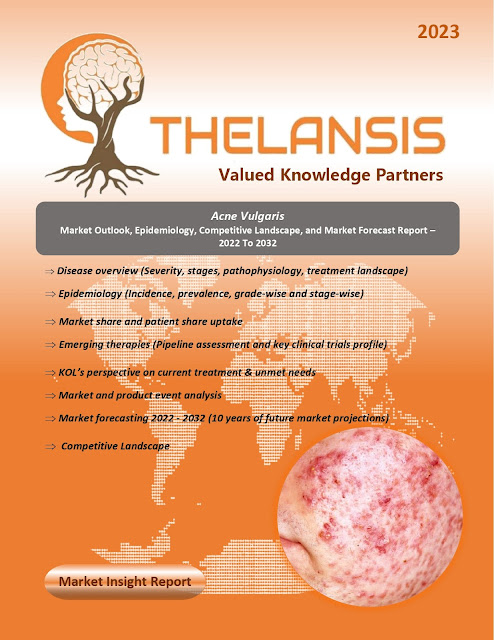Kyphoscoliosis – Market Outlook, Epidemiology, Competitive Landscape, and Market Forecast Report – 2023 To 2033
Kyphoscoliosis is a deviation from the spine's typical curvature in the sagittal and coronal planes, which may involve a rotation of the spinal axis. A lateral deviation in the coronal plane of greater than 10 degrees, as determined by the Cobb angle, is considered adult scoliosis. Postural variation can cause lateral deviations less than 10 degrees. "kyphosis" and "lordosis" describe how the spine curves in the sagittal plane. When looking at the spine laterally, the cervical and lumbar spines exhibit a normal degree of lordosis, or posterior curvature, ranging from 35 to 80 degrees; in contrast, the thoracic spine naturally exhibits a degree of kyphosis, or forward curvature, often between 30 and 50 degrees. The multifactorial etiology of kyphoscoliosis varies according to the patient's demographics. Causes can be divided into three categories: congenital, secondary, and idiopathic. Most cases are due to idiopathic reasons, which are still complex and have an uncertain etiology. Degenerative and senile changes, inflammatory diseases, posttraumatic fractures, iatrogenic post-surgical changes, and recurrent microtraumas from misuse are examples of secondary and disease-related causes. Reversible muscle imbalances that cause the thoracic spine to curve excessively may cause postural thoracic kyphosis. The underlying cause, age, degree of deformity, and presence or absence of neurologic impairments all influence the best course of treatment. Usually, conservative measures are taken to begin treatment, which may advance to the point where surgery is necessary. Kyphoscoliosis in younger patients could be an unintentional finding with minimal to no functional impact. A conservative approach to pain management involves taking NSAIDs.
- Scheuermann's illness, which primarily affects boys and has an incidence of 0.4% to 8% in the USA, is a prevalent cause of juvenile kyphoscoliosis. Typically, children with this disease are between 13 and 16.
Thelansis’s “Kyphoscoliosis Market Outlook, Epidemiology, Competitive Landscape, and Market Forecast Report – 2023 To 2033" covers disease overview, epidemiology, drug utilization, prescription share analysis, competitive landscape, clinical practice, regulatory landscape, patient share, market uptake, market forecast, and key market insights under the potential Kyphoscoliosis treatment modalities options for eight major markets (USA, Germany, France, Italy, Spain, UK, Japan, and China).
KOLs insights of Kyphoscoliosis across 8 MM market from the centre of Excellence/ Public/ Private hospitals participated in the study. Insights around current treatment landscape, epidemiology, clinical characteristics, future treatment paradigm, and Unmet needs.
Kyphoscoliosis Market Forecast Patient Based Forecast Model (MS. Excel Based Automated Dashboard), which Data Inputs with sourcing, Market Event, and Product Event, Country specific Forecast Model, Market uptake and patient share uptake, Attribute Analysis, Analog Analysis, Disease burden, and pricing scenario, Summary, and Insights.
Thelansis Competitive Intelligence (CI) practice has been established based on a deep understanding of the pharma/biotech business environment to provide an optimized support system to all levels of the decision-making process. It enables business leaders in forward-thinking and proactive decision-making. Thelansis supports scientific and commercial teams in seamless CI support by creating an AI/ ML-based technology-driven platform that manages the data flow from primary and secondary sources.



%20Market%20Outlook%20and%20Forecast.webp)
Comments
Post a Comment